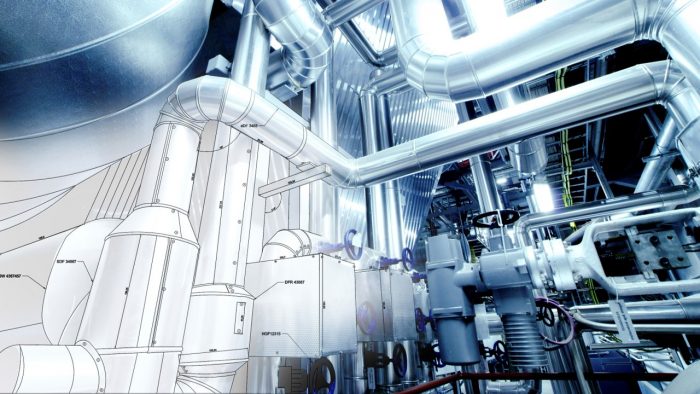Ton de Vries, senior director of business development at Bentley Systems, sits down with PBC Today to discuss the digital twin concept and how it could impact not only the construction of individual buildings but also how entire cities are planned and run
The digital twin has been hailed as a key step forward in the transformation of how we design, construct and, crucially, operate buildings and infrastructure assets.
But what is it and what can it do for the built environment? Ton de Vries of Bentley Systems has the answers.
What is a digital twin?
A digital twin is a digital representation of a physical asset, process or system. As well as the engineering information that allows us to understand and model its performance.
Typically, it can be continuously synchronised from multiple sources. This includes sensors and continuous surveying, to represent its near real-time status, working condition or position.
A digital twin enables users to visualise the asset, check status, perform analysis and generate insights to predict and optimise asset performance.
How does it differ from a BIM model?
An infrastructure engineering digital twin represents the near real-time status of every infrastructure asset, including buildings, roads, street furniture, sidewalks and parks. A BIM model can be part of a digital twin. Although a digital twin encompasses all relevant infrastructure assets and is continuously updated to reflect the near real-time status of the physical assets.
What are the key benefits of adopting the digital twin model?
Digital twins provide valuable insight in all stages of the assets; from planning to design, construction and operation. General benefits include better visual insights, easier communication with stakeholders, the ability to check the status of assets, perform analysis and provide insights for optimisation. Also, utilising iTwin® Services from Bentley enables digital information managers to align engineering data, reality data and other associated data – from diverse design tools and other sources – and transform it into a living digital twin, with no disruption to their current tools or processes.
For CapEx projects, project digital twins provide a risk-free way of simulating construction, logistics and fabrication sequences with the supply chain, as well as optimising design for passenger flows and enabling stakeholders to visualise emergency evacuations and resilience against flooding and/or extreme weather conditions.
For OpEx, performance digital twins truly become the organisation’s 3D/4D operating system. Combining data from continuous surveys, photogrammetry, LiDAR and sensors. Performance digital twins track changes to assets on a timeline. Enabling those responsible for asset management to roll the digital representation of the infrastructure asset and related real-world conditions forward or backward in time.
How can digital twins be used to boost citizen engagement with planning and development?
Bentley’s OpenCities™ Planner is an excellent example of how digital twins boost the planning and development process. OpenCities Planner is a cloud service that enables visualisation of 2D, 3D, GIS data, reality models and semantic city models like CityGML in a 3D world. You can design, visualise and communicate projects from large-scale city developments to detailed architectural designs. All you need is a web browser, tablet or a phone as OpenCities Planner is completely web-based and plugin-free.
OpenCities Planner capabilities, combined with Bentley’s reality modelling offerings, make city-scale digital twins broadly accessible. Synchronising reality and virtuality, OpenCities Planner offers the perfect web solution to enable every city government in going digital. Scalable for all organisation types from individual planners, architects, GIS engineers, city governments and larger organisations.
Citizen and other stakeholders can easily provide comments, making it the perfect tool for crowdsourcing ideas from the public.
What are the next steps for digital twins heading to city-scale DTs?
With the application of artificial intelligence and machine learning, immersive digital operations provide analytics visibility and insights to enhance the effectiveness of operations staff and help them anticipate and head-off issues before they arise and react more quickly with confidence.
With the advent of drones, robots and AI-based computer vision, inspection tasks can be automated through a living digital twin, enabling experts to conduct inspections remotely, vastly increasing productivity and leveraging the knowledge of scarce resources.
City-scale digital twins are not limited to Bentley applications only. The OpenSource library iModel.js can be used by developers and IT professionals to quickly and easily create immersive applications that connect their infrastructure digital twins with the rest of their digital world. iModel.js is the cornerstone of Bentley’s iTwin® Services that combine iModelHub, reality modelling and web-enabling software technologies within a connected data environment (CDE) for infrastructure engineering.
The concepts in iModel.js are built around one theme: openness. Over the long term, open systems will win over closed systems. When we say open, we mean our digital platform is open to whatever engineering applications and BIM practitioners are using.
The digital platform is open to whatever repositories and files systems their data is stored in, and it is open in file formats and schemas.
A primary reason for having an open-source iModel.js library is to foster innovation and novel uses of the technology. The opportunities for connecting infrastructure digital twins are vast and diverse, and we strongly encourage suggestions for enhancing iModel.js and the iModel.js community.
Our strategy is to create an ecosystem that builds on top of the iModel.js library and integrates information systems and software in very many unique and varied ways. The opportunity for creating and connecting infrastructure engineering digital twins is such a huge endeavour that no single technology vendor can build all the tools to satisfy the demand. An open-source ecosystem is best suited to allow digital twins to be efficiently developed and integrated with other systems.
Ton de Vries
Senior Director of Business Development
Tel: +44 (0)808 101 9247














